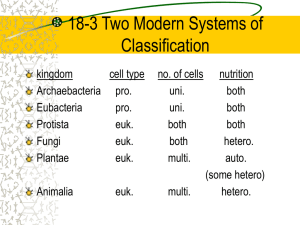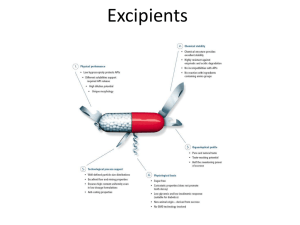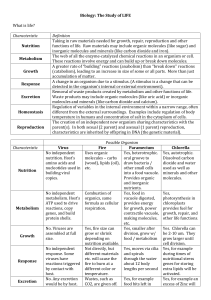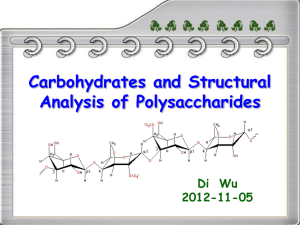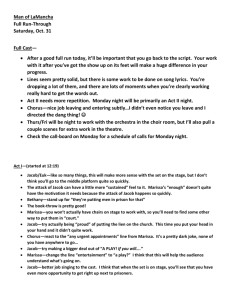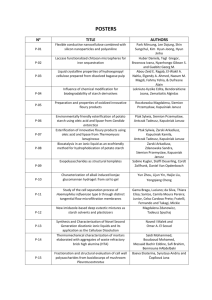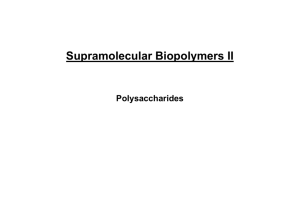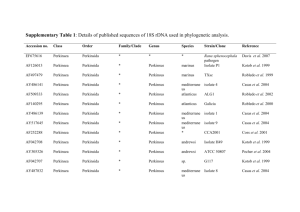Quarter 1 Review Packet ANSWER KEY
advertisement
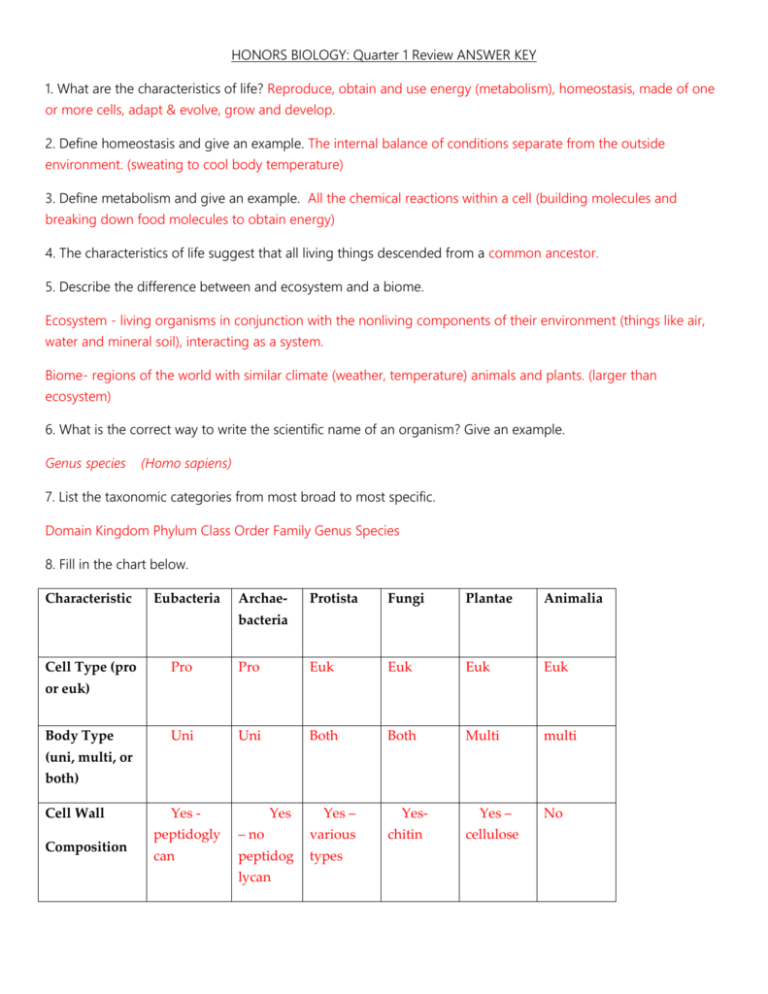
HONORS BIOLOGY: Quarter 1 Review ANSWER KEY 1. What are the characteristics of life? Reproduce, obtain and use energy (metabolism), homeostasis, made of one or more cells, adapt & evolve, grow and develop. 2. Define homeostasis and give an example. The internal balance of conditions separate from the outside environment. (sweating to cool body temperature) 3. Define metabolism and give an example. All the chemical reactions within a cell (building molecules and breaking down food molecules to obtain energy) 4. The characteristics of life suggest that all living things descended from a common ancestor. 5. Describe the difference between and ecosystem and a biome. Ecosystem - living organisms in conjunction with the nonliving components of their environment (things like air, water and mineral soil), interacting as a system. Biome- regions of the world with similar climate (weather, temperature) animals and plants. (larger than ecosystem) 6. What is the correct way to write the scientific name of an organism? Give an example. Genus species (Homo sapiens) 7. List the taxonomic categories from most broad to most specific. Domain Kingdom Phylum Class Order Family Genus Species 8. Fill in the chart below. Characteristic Eubacteria Archae- Protista Fungi Plantae Animalia bacteria Cell Type (pro Pro Pro Euk Euk Euk Euk Uni Uni Both Both Multi multi or euk) Body Type (uni, multi, or both) Cell Wall Composition Yes - Yes Yes – peptidogly – no various can peptidog types lycan Yeschitin Yes – cellulose No Nutrition Both Auto Both Hetero Auto Hetero (auto, hetero, or both) 9. Define isomers and give an example. Molecules that have the same molecular formula but different structure. (glucose and fructose) 10. Fill in the chart below. Macromolecule Monomer Unit Polymer Function(s) Elements Carbohydrates Monosaccharides Polysaccharides Short-term energy CHO storage Lipids Proteins X Amino acids X polypeptide Long-term energy CHO storage Metabolism, CHNOS transport, defense, motion, structure, regulation Nucleic Acids Nucleotide Polynucleotides Information (DNA & RNA) storage 11. Compare and contrast the polysaccharides starch and cellulose. Starch – energy storage for plants Cellulose – structure/support in plant cell walls Both carbohydrates (polysaccharides) CHNOP 12. Sketch a picture of the following molecules below: starch, monounsaturated fatty acid, and a polyunsaturated fatty acid. Label each sketch. 13. Label each part of the plant cell below. A. nucleus B. DNA C. Nucleolus D. nuclear pore E. Rough ER F. Smooth ER G. Vacuole H. Cytoskeleton I. Chloroplast J. Cell wall K. cell membrane L. mitochondria M. vesicle N. golgi apparatus 14. Draw the three shapes of bacteria and write the correct name of each shape. 15. Compare and contrast plant cells and animal cells. Categorize the differences as internal or external. External differences – plants have cell wall and animal cells do not Internal- plant cells have a chloroplast, animal cells do not Plant cells have a larger central vacuole and animals cells have several small vacuoles
